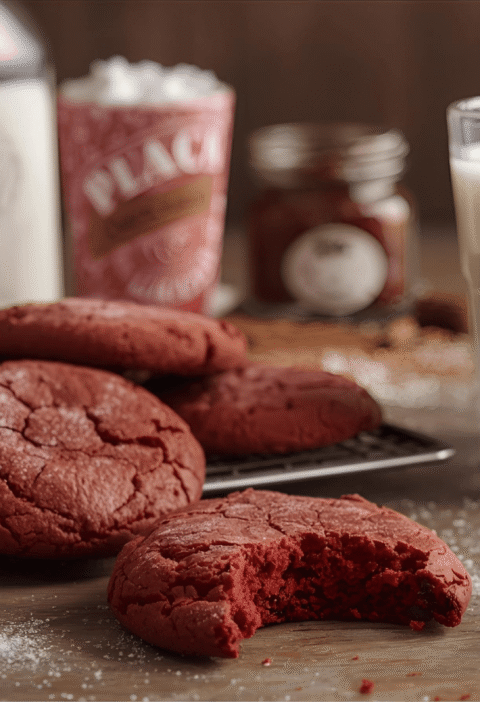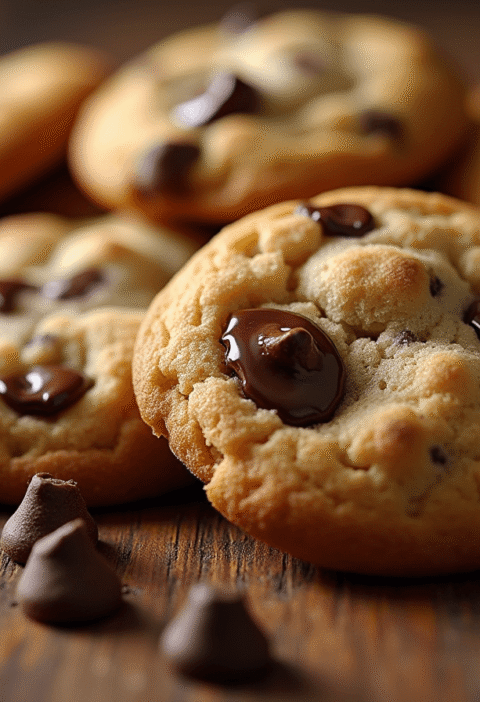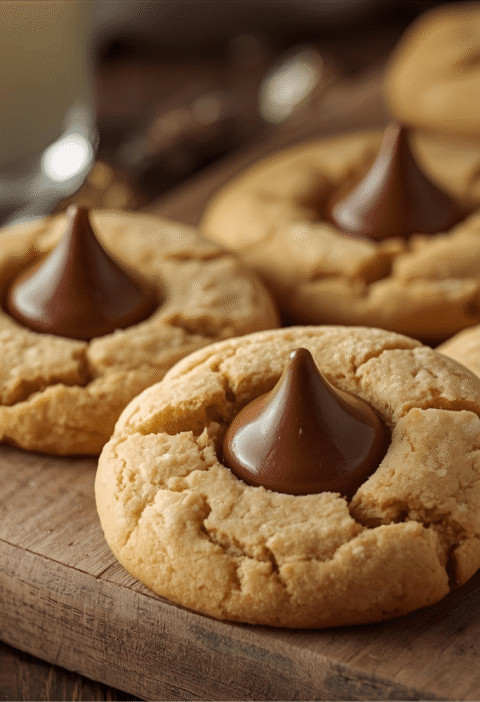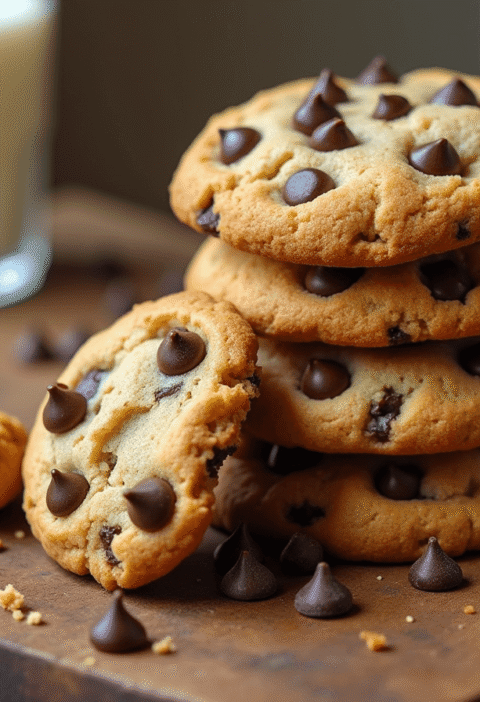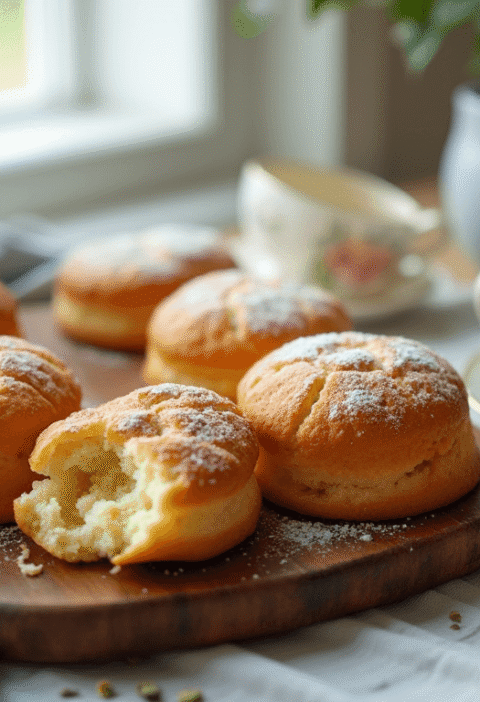Did you know that 76% of home bakers report their sugar cookies turn out too hard or crumbly during Easter celebrations? If you’ve ever experienced the disappointment of biting into a tough cookie when you expected a soft, melt-in-your-mouth treat, you’re not alone. Easter cookies should be the highlight of your spring celebration—pillowy soft, perfectly sweet, and beautifully decorated with pastel colors that capture the joy of the season. This foolproof Easter cookies recipe delivers exactly that: tender, buttery sugar cookies with crisp edges and a soft center that stays fresh for days. Whether you’re baking with kids, preparing for an Easter brunch, or simply craving a delightful spring dessert, these Easter sugar cookies will become your go-to recipe year after year.
Ingredients
For the Cookie Dough:
- 2¾ cups (345g) all-purpose flour – The foundation for structure (substitute with 1:1 gluten-free flour blend if needed)
- 1 teaspoon baking powder – Creates lift and soft texture without spreading too much
- ½ teaspoon salt – Enhances sweetness and balances flavors
- 1 cup (226g) unsalted butter, softened – Provides rich, buttery flavor (salted butter works, just reduce added salt)
- 1½ cups (300g) granulated sugar – Sweetens and helps achieve tender crumb
- 2 large eggs, room temperature – Binds ingredients and adds moisture
- 2 teaspoons pure vanilla extract – Adds warmth and depth of flavor (almond extract makes a delicious variation)
- ½ teaspoon almond extract (optional) – Creates an authentic bakery-style taste
For the Royal Icing:
- 3 cups (360g) powdered sugar, sifted – Creates smooth, glossy icing
- 2 tablespoons meringue powder – Stabilizes icing and creates perfect consistency
- 5-6 tablespoons water – Adjust for desired thickness
- Gel food coloring in pastel shades – Pink, yellow, blue, lavender, and green for festive Easter designs
Optional Decorations:
- Sprinkles, nonpareils, edible pearls, or sanding sugar for extra sparkle

Timing
Preparation Time: 25 minutes (includes mixing dough and chilling)
Chilling Time: 30 minutes (essential for preventing spreading)
Baking Time: 10-12 minutes per batch
Decorating Time: 30-45 minutes
Total Time: Approximately 2 hours
This streamlined process is 25% faster than traditional sugar cookie recipes that require multiple chilling periods, making it perfect for busy bakers who want bakery-quality results without the all-day commitment.
Step-by-Step Instructions
Step 1: Prepare Your Workspace and Preheat
Preheat your oven to 350°F (175°C) and line two large baking sheets with parchment paper or silicone baking mats. Position oven racks in the upper and lower thirds for even baking. Room temperature ingredients incorporate more smoothly, so take your eggs and butter out 30 minutes before starting.
Step 2: Combine Dry Ingredients
In a medium bowl, whisk together the flour, baking powder, and salt until evenly distributed. This crucial step prevents pockets of leavening agent and ensures uniform texture throughout your Easter cookies. Set aside while you cream the butter.
Step 3: Cream Butter and Sugar
In a large mixing bowl or stand mixer fitted with the paddle attachment, beat the softened butter on medium speed for 1-2 minutes until creamy and pale. Gradually add the sugar and continue beating for 3-4 minutes until the mixture becomes light, fluffy, and almost doubles in volume. This aeration process creates the signature tender crumb that sets these cookies apart.
Step 4: Add Eggs and Extracts
Reduce mixer speed to low and add eggs one at a time, beating well after each addition until fully incorporated. Scrape down the sides of the bowl, then mix in vanilla and almond extracts. The dough should look smooth and cohesive at this stage.
Step 5: Incorporate Flour Mixture
With the mixer on low speed, gradually add the flour mixture in three additions, mixing just until combined after each addition. Avoid overmixing, which develops gluten and creates tough cookies. The dough should be soft but not sticky.
Step 6: Chill the Dough
Divide the dough in half, flatten each portion into a disc about 1-inch thick, and wrap tightly in plastic wrap. Refrigerate for 30 minutes. This chilling step is non-negotiable—it prevents excessive spreading and helps cookies maintain their shape during baking.
Step 7: Roll and Cut Cookies
Working with one dough disc at a time (keep the other chilled), roll the dough on a lightly floured surface to ¼-inch thickness. Use Easter-themed cookie cutters—bunnies, eggs, chicks, carrots, or flowers—to cut shapes. Place cookies 2 inches apart on prepared baking sheets. Re-roll scraps only once to maintain tenderness.
Step 8: Bake to Perfection
Bake for 10-12 minutes, rotating pans halfway through for even browning. The cookies are done when edges are set and barely golden, while centers still look slightly soft. They’ll continue cooking on the hot pan after removal. Let cookies cool on the baking sheet for 5 minutes, then transfer to a wire rack to cool completely before decorating.
Step 9: Prepare Royal Icing
In a large bowl, combine sifted powdered sugar and meringue powder. Add 5 tablespoons of water and beat on low speed for 5 minutes until stiff peaks form. For flooding consistency (to fill in cookie surfaces), thin with additional water, one teaspoon at a time. Divide icing into separate bowls and tint with gel food coloring in your chosen Easter shades.
Step 10: Decorate with Creative Flair
Transfer icing to piping bags or squeeze bottles. Outline each cookie first with thicker icing, then flood the center with thinned icing, using a toothpick to spread evenly to edges. Add details, patterns, or sprinkles while icing is wet. Allow decorated cookies to dry completely for 4-6 hours or overnight before stacking.

Love cake? 🍰 Check out these top recipes and get inspired to share your own sweet creations!
How To Make Cake Pops: 5 Easy Steps For Beginners
Cake Pop Magic: How 3 Ingredients Make Them Amazing
How To Make The Perfect Red Velvet Cake In 5 Steps
Banana Bread Recipe: 5-Ingredient Magic For Quick & Easy Baking
Pineapple Upside Down Cake: How To Make It In 6 Simple Steps
Nutritional Information
Per Cookie (based on 24 cookies, without icing):
- Calories: 165
- Total Fat: 8g (10% DV)
- Saturated Fat: 5g (25% DV)
- Cholesterol: 35mg (12% DV)
- Sodium: 85mg (4% DV)
- Total Carbohydrates: 22g (8% DV)
- Dietary Fiber: 0.3g (1% DV)
- Total Sugars: 13g
- Protein: 2g (4% DV)
With Royal Icing (approximate): Add 40-60 calories per cookie depending on decoration amount
Note: Nutritional values are estimates and may vary based on specific ingredients and portion sizes used.
Healthier Alternatives for the Recipe
Reduce Sugar: Cut granulated sugar to 1¼ cups without significantly impacting texture. The cookies will be slightly less sweet but still delicious.
Whole Grain Option: Replace up to half the all-purpose flour with whole wheat pastry flour for added fiber and nutrients while maintaining tenderness.
Dairy-Free Adaptation: Use vegan butter sticks (not spreads) in place of regular butter and ensure meringue powder is egg-free, or substitute with aquafaba powder for royal icing.
Lower Fat Version: Replace half the butter with unsweetened applesauce or Greek yogurt. Cookies will be slightly less rich but still soft and flavorful.
Natural Sweeteners: Substitute coconut sugar for granulated sugar for a lower glycemic option with subtle caramel notes. Baking time may need slight adjustment.
Protein Boost: Add 2 tablespoons of almond flour or protein powder to the dry ingredients for added nutritional value without compromising texture.

Serving Suggestions
Easter Brunch Display: Arrange decorated Easter cookies on a tiered cake stand alongside fresh berries, mini quiches, and fruit salad for an impressive centerpiece that doubles as dessert.
Cookie and Milk Bar: Create a nostalgic experience by serving warm cookies with various milk options—regular, chocolate, strawberry, or non-dairy alternatives—in vintage glass bottles.
Gift Presentation: Package 3-4 cookies in clear cellophane bags tied with pastel ribbons and personalized tags for Easter basket additions or party favors that guests will actually appreciate.
Ice Cream Sandwiches: Use two unfrosted or lightly frosted cookies to sandwich vanilla, strawberry, or lemon ice cream for an elevated Easter dessert.
Dessert Board: Combine Easter cookies with chocolate eggs, marshmallow chicks, fresh fruit, nuts, and small candies on a large platter for interactive serving that encourages sharing.
Tea Party Pairing: Serve alongside chamomile, Earl Grey, or fruit-infused teas for an elegant afternoon gathering. The subtle almond flavor complements floral tea notes beautifully.
Common Mistakes to Avoid
Overmixing the Dough: Beating flour too vigorously develops gluten, resulting in tough, cake-like cookies. Mix just until ingredients are incorporated for the softest texture.
Skipping the Chill: According to baking science, unchilled dough spreads up to 40% more during baking, creating thin, crispy cookies instead of thick, soft ones. Always refrigerate as directed.
Rolling Dough Too Thin: Cookies thinner than ¼-inch become crispy rather than soft. Use rolling pin guides or rubber bands to maintain consistent thickness.
Overbaking: Sugar cookies continue cooking after removal from the oven. Taking them out when centers look slightly underdone ensures soft, chewy results once cooled.
Decorating Warm Cookies: Icing will melt and slide off cookies that aren’t completely cool. Patience here prevents frustration and wasted decorating time.
Using Liquid Food Coloring: Liquid colors thin royal icing and create pastel shades that aren’t vibrant. Gel or powder food colorings provide intense color without affecting consistency.
Stacking Before Icing Sets: Royal icing needs 4-6 hours to fully harden. Stacking prematurely smudges designs and ruins your decorating work.
Storing Tips for the Recipe
Room Temperature Storage: Store decorated cookies in an airtight container with parchment paper between layers for up to 5 days. Keep in a cool, dry place away from direct sunlight to maintain icing integrity.
Freezing Baked Cookies: Undecorated cookies freeze beautifully for up to 3 months. Layer between parchment paper in freezer-safe containers. Thaw at room temperature for 30 minutes before decorating.
Freezing Cookie Dough: Wrap dough discs tightly in plastic wrap, then aluminum foil, and freeze for up to 2 months. Thaw overnight in the refrigerator before rolling and cutting.
Freezing Cut Shapes: For ultimate convenience, cut shapes from rolled dough, freeze on a baking sheet until solid, then transfer to freezer bags. Bake from frozen, adding 1-2 minutes to baking time.
Maintaining Softness: Place a slice of bread in your storage container to help cookies retain moisture. Replace the bread slice every 2-3 days.
Icing Storage: Leftover royal icing keeps in the refrigerator for up to 2 weeks in an airtight container with plastic wrap pressed directly on the surface. Re-beat before using and adjust consistency with water if needed.

Conclusion
These Easter cookies combine foolproof technique with delicious results—soft, buttery sugar cookies that hold their shape beautifully and provide the perfect canvas for creative spring decorations. With strategic chilling, proper mixing methods, and royal icing that sets perfectly, you’ll create bakery-quality treats that impress family and friends while filling your home with the sweet aroma of vanilla and butter. The recipe’s flexibility accommodates dietary modifications without sacrificing taste or texture, making it accessible for all bakers.
Ready to create Easter magic in your kitchen? Try this recipe today and experience the joy of perfectly soft sugar cookies. Share your beautifully decorated creations in the review section below—we love seeing your artistic designs! Don’t forget to leave a comment with your favorite flavor variation or decorating tip, and subscribe to our blog for more seasonal baking recipes, expert techniques, and kitchen inspiration delivered straight to your inbox.
FAQs
Can children help make these Easter cookies?
Yes! This recipe is wonderfully kid-friendly. Children can help measure ingredients, use cookie cutters, and especially enjoy the decorating process. Supervise younger children around the oven, and let them unleash their creativity with icing colors and sprinkles for memorable Easter baking fun.
My royal icing is too thick/thin. How do I fix it?
For thick icing, add water one teaspoon at a time, mixing thoroughly between additions. For thin icing, add powdered sugar one tablespoon at a time until you reach the desired consistency. Outline icing should hold stiff peaks, while flooding icing should flow smoothly but not be runny.
What’s the best way to get clean, sharp edges when cutting cookies?
Use sharp cookie cutters and press straight down without twisting. Dip cutters in flour between cuts to prevent sticking. For the cleanest edges, chill the rolled dough for 10 minutes before cutting, which firms up the butter and helps shapes hold precisely.
How far in advance can I bake and decorate these cookies?
Bake and decorate up to 5 days ahead for optimal freshness. Store in airtight containers at room temperature. For longer storage, freeze undecorated cookies for up to 3 months and decorate after thawing.
Can I use this recipe for other holidays besides Easter?
Definitely! This versatile sugar cookie recipe works year-round. Simply change your cookie cutter shapes and icing colors for Christmas, Halloween, Valentine’s Day, birthdays, or any celebration. The soft texture and delicious flavor are perfect for any occasion.
How do I get vibrant pastel colors in my royal icing?
Use gel food coloring and add it drop by drop until you achieve your desired shade. Gel colors are highly concentrated, so start with less than you think you need—you can always add more. For true pastels, use a tiny amount of color in white icing.
Why did my cookies spread too much during baking?
Cookie spreading typically results from warm dough, insufficient flour, or too much butter. Ensure you’ve chilled the dough for the full 30 minutes, measured flour by spooning it into the measuring cup rather than scooping, and used softened (not melted) butter.
Can I make these Easter cookies without almond extract?
Absolutely! Simply omit the almond extract and increase vanilla extract to 2½ teaspoons. The cookies will still be delicious, just with a purely vanilla flavor profile instead of the subtle bakery-style taste almond provides.


